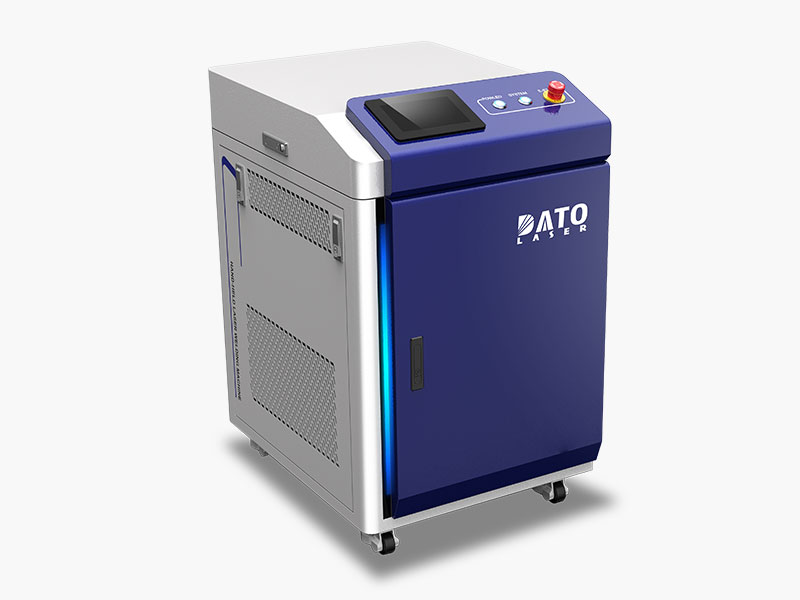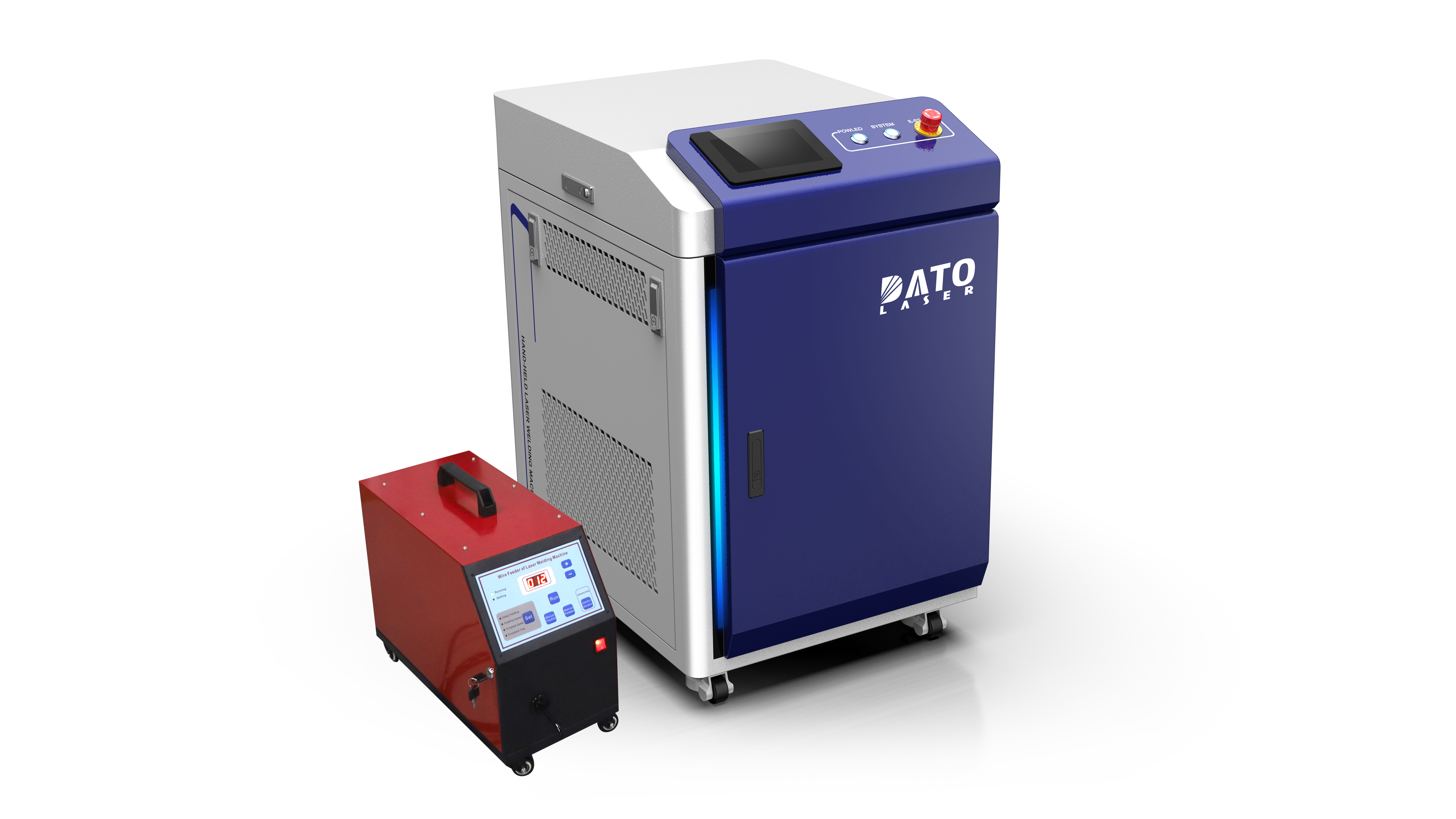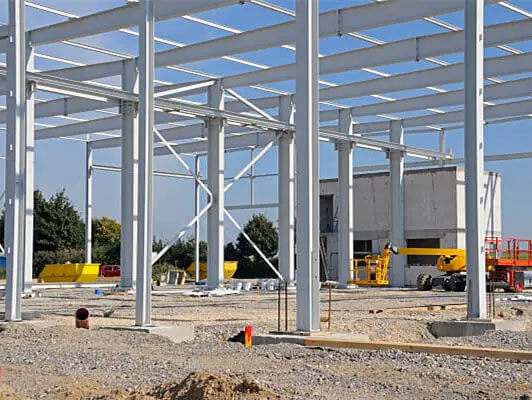How to Choose the Perfect Fiber Laser Welding Machine: A Comprehensive Guide for Industrial Applications

Understanding Fiber Laser Welding Technology
As a professional with extensive experience at DATO & Leapion, I've witnessed the transformative impact of fiber laser welding technology across various industries. Since our establishment in 2007, we've helped countless businesses optimize their welding operations through advanced laser solutions. Our deep understanding of industrial requirements has positioned us as a leading provider of precision welding equipment.
The Evolution of Industrial Laser Welding
Modern fiber laser welding has revolutionized industrial manufacturing processes by offering unprecedented precision and efficiency. These sophisticated machines utilize high-powered fiber lasers that generate intense, focused beams of light, creating precise, strong welds with minimal heat-affected zones. The technology has evolved significantly since its introduction, now incorporating advanced features like real-time monitoring and adaptive control systems that ensure consistent weld quality across various materials and thicknesses.
Key Considerations for Selecting a Fiber Laser Welder
Power Requirements and Material Thickness
The power requirements of your fiber laser welding machine directly correlate with the materials you'll be processing. For thin materials under 2mm, a 1000W fiber laser welding system typically provides excellent results with weld speeds up to 10 meters per minute. When working with materials between 2-6mm, a 2000-3000W system offers optimal performance, ensuring proper penetration while maintaining high production rates.
For thick materials exceeding 6mm, high-power systems ranging from 4000W to 6000W become necessary. These systems deliver the intense energy required for deep penetration welding while maintaining precise control over the heat-affected zone. Our experience shows that matching power requirements to material specifications is crucial for achieving optimal weld quality and production efficiency.
Welding Speed and Production Volume
Industrial fiber laser welding machines offer varying speeds depending on the application and material characteristics. For thin sheet metal welding, modern systems can achieve impressive speeds up to 10 meters per minute while maintaining excellent weld quality. This high-speed capability makes them ideal for high-volume production environments.
When working with medium-thickness materials, typical processing speeds range from 2-5 meters per minute. These moderate speeds ensure proper heat penetration and weld formation while still maintaining productive throughput rates. For thick materials requiring deep penetration, slower speeds are necessary to achieve proper fusion and structural integrity.
Application-Specific Requirements
Automotive Industry Applications
The automotive sector demands exceptional precision and reliability in welding equipment. Modern vehicles incorporate various high-strength steels and lightweight alloys, requiring sophisticated welding solutions. Our fiber laser welders provide the necessary precision for safety-critical components, maintaining consistent weld quality through advanced monitoring systems.
For example, when welding automotive body panels, our systems utilize specialized scanning heads that can adjust beam parameters in real-time, ensuring uniform penetration despite variations in material thickness or gap conditions. This technology enables manufacturers to achieve the strict quality standards required for structural components while maintaining high production rates.
Electronics Manufacturing
Electronic component welding presents unique challenges that require specialized solutions. Our fiber laser welding systems incorporate ultra-precise beam control mechanisms capable of producing welds as small as 0.1mm in diameter. This precision is essential for delicate components like battery connections and circuit board assemblies.
Temperature control is particularly critical in electronics manufacturing. Our systems employ advanced thermal monitoring and control systems that prevent component damage while ensuring proper fusion. The integration of specialized shielding gas delivery systems protects sensitive electronics from oxidation during the welding process.
Technical Specifications and Features
Beam Quality and Control
Modern fiber laser welding systems from DATO & Leapion offer superior beam quality through advanced optical designs. Our machines maintain a beam parameter product (BPP) of less than 0.4 mm*mrad, ensuring excellent focus characteristics and consistent power density at the workpiece.
The adjustable spot size control allows operators to fine-tune the beam diameter from 0.1mm to 2mm, accommodating various application requirements. Dynamic beam shaping capabilities enable the system to adapt to changing material conditions or joint geometries in real-time, ensuring optimal weld quality throughout the process.
Automation Integration
Our fiber laser welding systems are designed for seamless integration with modern manufacturing environments. The machines feature standardized interfaces for robotic systems, supporting major robot brands and communication protocols. This compatibility enables easy integration into existing production lines while maintaining precise control over welding parameters.
Advanced CNC integration capabilities allow for complex weld patterns and automated production sequences. The systems include intelligent material handling features that coordinate with external automation systems, optimizing workflow and reducing cycle times. Real-time monitoring and data collection capabilities enable comprehensive production tracking and quality control.

Material Processing Capabilities
Advanced Material Processing Solutions
At DATO & Leapion, we've developed sophisticated solutions for handling complex welding scenarios. Our fiber laser welding systems excel at dissimilar metal welding, a challenging process that requires precise control over heat input and beam characteristics. For instance, when joining aluminum to copper - a common requirement in electric vehicle battery production - our systems utilize specialized pulse shaping technology and precise power control to create strong, reliable joints while minimizing the formation of brittle intermetallic compounds.
The ability to weld reflective materials like copper and brass represents another significant advancement. Our machines incorporate advanced back-reflection protection systems and specialized optics that maintain stability even when working with highly reflective surfaces. This technology enables consistent, high-quality welds on materials that traditionally posed significant challenges for laser welding.
Quality Control and Monitoring
Real-Time Monitoring Systems
Modern manufacturing demands comprehensive quality assurance, which is why our systems integrate advanced monitoring capabilities. The real-time weld seam tracking system uses high-speed cameras and sophisticated algorithms to monitor weld quality during production. This system can detect and respond to variations in joint geometry, material thickness, or surface conditions within milliseconds, ensuring consistent weld quality even in challenging conditions.
Temperature monitoring plays a crucial role in maintaining weld integrity. Our systems employ multiple temperature sensors and thermal imaging cameras that provide continuous feedback to the control system. When temperature variations exceed predetermined thresholds, the system automatically adjusts laser parameters to maintain optimal welding conditions.
Cost Considerations and ROI
Total Cost of Ownership Analysis
Understanding the complete financial impact of investing in a fiber laser welding system requires careful consideration of multiple factors. Initial investment costs typically range from $100,000 to $500,000, depending on power requirements and automation levels. However, the long-term benefits often justify this investment through:
Energy Efficiency: Modern fiber laser welders operate at 30-40% wall-plug efficiency, significantly higher than traditional welding methods. For example, a typical 3kW system processing materials for 8 hours per day might consume approximately 70-80 kWh, resulting in substantial energy cost savings over time.
Reduced Operating Costs: The minimal consumable requirements and low maintenance needs of fiber laser systems translate to operational savings. Our customers typically report 50-60% reduction in ongoing operational costs compared to traditional welding methods.
Service and Support Excellence
Comprehensive Technical Support
At DATO & Leapion, we understand that equipment reliability directly impacts production efficiency. Our technical support program includes:
Remote Diagnostics: Advanced monitoring systems allow our technical team to diagnose and often resolve issues remotely, minimizing downtime. The system continuously monitors over 200 parameters, providing early warning of potential issues before they affect production.
Training Programs: We offer comprehensive operator training programs that combine theoretical knowledge with hands-on experience. These programs typically span 3-5 days and cover everything from basic operation to advanced maintenance procedures, ensuring your team can maximize the system's capabilities.

Conclusion
Selecting the right fiber laser welding machine requires careful consideration of current needs and future requirements. The ideal system should balance power capabilities, precision requirements, and automation features while providing a clear path for future expansion. At DATO & Leapion, our expertise helps businesses navigate these choices to find the perfect solution for their specific applications.
Through our extensive experience since 2007, we've developed a deep understanding of various industry requirements and continue to innovate our offerings to meet evolving manufacturing needs. Whether you're upgrading existing capabilities or implementing new production lines, our team is ready to help you select and implement the optimal fiber laser welding solution for your specific requirements.
Related Blogs
-
 Exploring the Safety, Precision, and Industrial Benefits of Laser Surface CleaningIn today’s fast-paced industrial world, where quality, efficiency, and sustainability are top priorities, manufacturers are constantly seeking better ways to clean metal surfaces without compromising material integrityBlog
Exploring the Safety, Precision, and Industrial Benefits of Laser Surface CleaningIn today’s fast-paced industrial world, where quality, efficiency, and sustainability are top priorities, manufacturers are constantly seeking better ways to clean metal surfaces without compromising material integrityBlog -
 A Complete Guide by DATO and LeapionIn modern industry, surface preparation and maintenance play a crucial role in achieving high-quality manufacturing results. Laser cleaning machines have emerged as one of the most innovative, efficient, and environmentally friendly tools for removing contaminantsBlog
A Complete Guide by DATO and LeapionIn modern industry, surface preparation and maintenance play a crucial role in achieving high-quality manufacturing results. Laser cleaning machines have emerged as one of the most innovative, efficient, and environmentally friendly tools for removing contaminantsBlog -
 Laser cleaning machines are revolutionizing industrial surface cleaning by offering a faster, safer, and more eco-friendly alternative to traditional methods. Whether removing rust, paint, oil, oxide, or other surface contaminants, laser cleaning has become a cutting-edge solution in manufacturing,Blog
Laser cleaning machines are revolutionizing industrial surface cleaning by offering a faster, safer, and more eco-friendly alternative to traditional methods. Whether removing rust, paint, oil, oxide, or other surface contaminants, laser cleaning has become a cutting-edge solution in manufacturing,Blog -
 Introduction: Transforming EV Battery Manufacturing Through Laser TechnologyThe electric vehicle revolution has accelerated dramatically over the past decade, bringing with it unprecedented challenges and opportunities in battery manufacturing. As global automakers commit billions to electrificationBlog
Introduction: Transforming EV Battery Manufacturing Through Laser TechnologyThe electric vehicle revolution has accelerated dramatically over the past decade, bringing with it unprecedented challenges and opportunities in battery manufacturing. As global automakers commit billions to electrificationBlog













